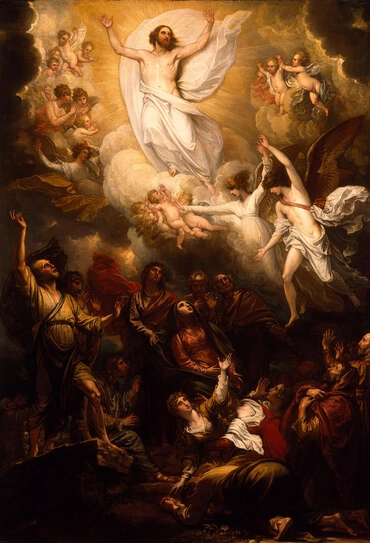Apocalypse Revealed # 905
905. 21:16 The city is laid out as a square. This symbolizes justice in the New Church.
The city was seen as square because a square or quadrilateral form symbolizes justice, inasmuch as a triangle symbolizes rectitude, all of these being symbols on the lowest level, which is the natural one.
A square or quadrilateral layout symbolizes justice because it has four sides, and the four sides face the four cardinal points of the compass; and to face the four cardinal points equally is to regard everything equitably. That is why there were three gates on each side giving entrance into the city, and why it is said in Isaiah,
Open the gates, that a righteous nation which keeps its fealties may enter in. (Isaiah 26:2)
The city was laid out as a square in order that its length and breadth might be equal, the length symbolizing the goodness of the New Church, and the breadth its truth, and when goodness and truth are in balance, then there is justice.
It is because a square has this symbolic meaning that we say in everyday speech that this or that man deals squarely, meaning a man who does not incline unjustly to either one party or the other.
Because a square symbolizes justice, therefore the altar of burnt offering was square (Exodus 27:1), which symbolized a worship springing from a celestial goodness and consequent truth. The altar of incense, too, was square as well (Exodus 30:1-2). And other objects also were square.
The Lord

The Bible refers to the Lord in many different ways seemingly interchangeably. Understood in the internal sense, though, there are important differences. To some degree, the meanings all start with "Jehovah," which is the Lord's actual name. It represents the perfect, eternal, infinite love which is the Lord's actual essence. As such it also represents the good will that flows from the Lord to us and His desire for us to be good. "God," meanwhile, represents the wisdom of the Lord and the true knowledge and understanding He offers to us. The term "the Lord" is very close in meaning to "Jehovah," and in many cases is interchangeable (indeed, translators have a tendency to go back and forth). When the two are used together, though, "the Lord" refers to the power of the Lord's goodness, the force it brings, whereas "Jehovah" represents the goodness itself. In the New Testament, the name "Jehovah" is never used; the term "the Lord" replaces it completely. There are two reasons for that. First, the Jews of the day considered the name "Jehovah" too holy to speak or write. Second, they would not have been able to grasp the idea that the Lord -- who was among them in human form at the time -- was in fact Jehovah Himself. This does ultimately lead to a difference in the two terms by the end of the Bible. Thought of as "Jehovah," the Lord is the ultimate human form and has the potential for assuming a physical human body; thought of as "the Lord" He actually has that human body, rendered divine by the events of his physical life.






